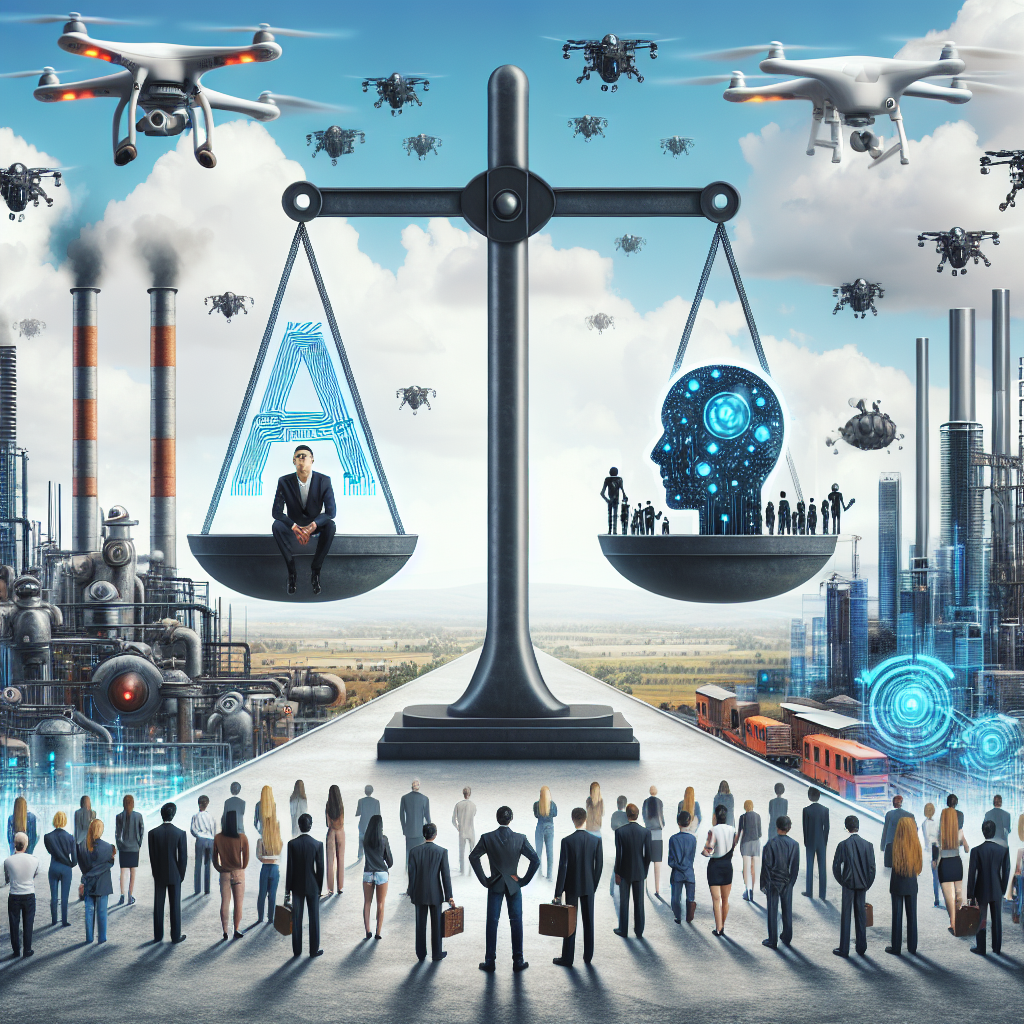Artificial Intelligence (AI) has been a hot topic of discussion in recent years, with many experts warning of the potential threat it poses to jobs and employment. As AI technology continues to advance rapidly, there is growing concern that automation and machine learning could lead to widespread unemployment across various industries. But how will society cope with the impact of AI on the job market?
The rapid advancement of AI technology has already had a significant impact on the job market, with some estimates suggesting that up to 800 million jobs could be lost to automation by 2030. While AI has the potential to revolutionize industries and improve efficiency and productivity, it also poses a serious threat to jobs that are currently performed by humans.
One of the key reasons why AI is seen as a threat to employment is its ability to perform tasks more efficiently and accurately than humans. AI-powered machines can work around the clock without the need for breaks or rest, and they can quickly analyze data and make decisions at a speed that is impossible for humans to match. This means that many jobs that are currently performed by humans, such as data entry, customer service, and even some forms of creative work, could be at risk of being automated in the near future.
Another factor contributing to the threat of unemployment posed by AI is the increasing sophistication of the technology. Machine learning algorithms are becoming increasingly advanced, allowing AI systems to learn and adapt to new tasks and challenges on their own. This means that AI-powered machines are becoming more versatile and capable of performing a wider range of tasks, further increasing the potential for job displacement.
So how will society cope with the threat of unemployment posed by AI? There are a number of potential strategies that could be implemented to mitigate the impact of AI on the job market and help workers transition to new roles and industries.
One possible solution is to invest in education and training programs that focus on developing skills that are less likely to be automated by AI. For example, jobs that require creativity, critical thinking, and emotional intelligence are less likely to be automated, so workers could be encouraged to develop these skills in order to remain competitive in the job market.
Another strategy is to implement policies that support workers who are displaced by AI-powered automation. This could include providing retraining programs, financial assistance, and job placement services to help workers transition to new roles and industries. Governments and businesses could also work together to create new job opportunities in emerging industries that are less likely to be automated by AI.
Additionally, there is a growing movement to explore the concept of a universal basic income (UBI) as a potential solution to the threat of unemployment posed by AI. UBI is a form of social security in which all citizens receive a regular, unconditional sum of money from the government, regardless of their employment status. Proponents of UBI argue that it could help to alleviate poverty, reduce income inequality, and provide a safety net for workers who are displaced by automation.
However, there are also concerns about the potential drawbacks of UBI, such as the impact it could have on incentive to work and the potential for inflation. Critics argue that UBI could disincentivize work and lead to a decline in productivity, as some workers may choose to rely on the government for income rather than seeking employment. There are also questions about the feasibility of funding UBI, as it would require a significant investment of government resources.
In addition to these strategies, there are also ethical considerations that need to be taken into account when addressing the threat of unemployment posed by AI. As AI technology continues to advance, it is important to consider the impact it will have on society as a whole, including issues such as income inequality, job security, and the social implications of widespread automation.
Ultimately, the threat of unemployment posed by AI is a complex and multifaceted issue that will require a coordinated effort from governments, businesses, and society as a whole to address. By investing in education and training programs, implementing policies to support displaced workers, and exploring innovative solutions such as UBI, society can begin to prepare for the impact of AI on the job market and help workers transition to new roles and industries.
FAQs:
Q: Will AI really lead to widespread unemployment?
A: While AI has the potential to automate many jobs currently performed by humans, it is difficult to predict the exact impact it will have on the job market. Some estimates suggest that up to 800 million jobs could be lost to automation by 2030, but it is also possible that new job opportunities could be created in emerging industries that are less likely to be automated by AI.
Q: What can workers do to prepare for the impact of AI on the job market?
A: Workers can prepare for the impact of AI by developing skills that are less likely to be automated, such as creativity, critical thinking, and emotional intelligence. They can also stay informed about developments in AI technology and seek out training programs and resources to help them transition to new roles and industries.
Q: What are some potential strategies for mitigating the impact of AI on unemployment?
A: Some potential strategies for mitigating the impact of AI on unemployment include investing in education and training programs, implementing policies to support displaced workers, and exploring innovative solutions such as universal basic income. By taking a proactive approach to addressing the threat of unemployment posed by AI, society can help workers transition to new roles and industries and adapt to the changing job market.

